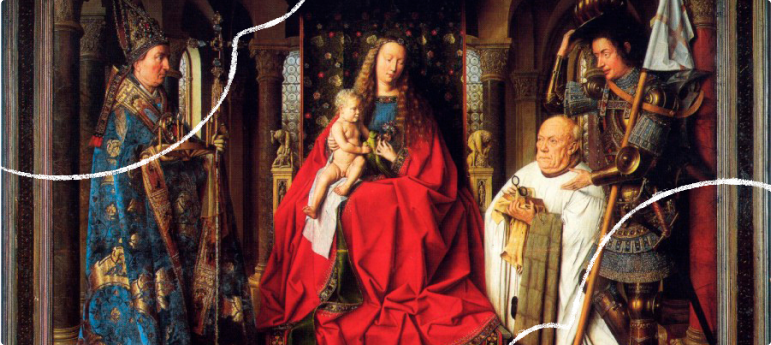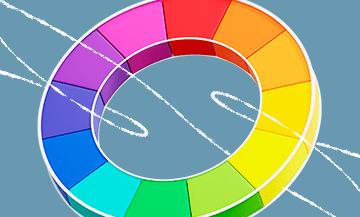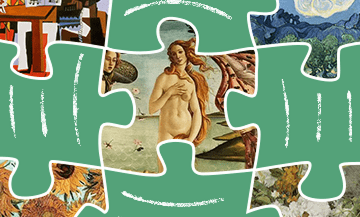Riddle: why do they write in oils and not draw?
A painting is born from the artist’s brush, but each creator approaches this process in their own way. There is even a debate: do artists “paint” or “draw”?
Let’s delve into the nuances of visual arts and the correct application of terms and concepts. Every artistic profession has its own subtleties that reveal themselves not only in the creative sphere but also in the language we use to describe our work process. In other words, today we will discuss professional jargon.
If you are an artist or simply passionate about visual arts, you have probably encountered discussions about whether it’s correct to say that an artist “paints”? Or perhaps they “draw”?
Let’s explore this question together!
A little history
It all began in ancient times, when primitive artists, looking at fire, noticed its dancing shades and decided to capture this dance of life on the walls of their caves. As “stone poets”, they used minerals, herbs and liquids to create their first “paintings”. This is how the history of painting began.

So why do we say “paint” instead of “draw”? If we turn our gaze to dictionaries, an interesting fact emerges: the term “draw” debuted in the early 18th century and was borrowed from Western European languages. Before this period, other expressions were used, such as “sketch,” “scratch,” or “carve.”
Drawing involved creating an image on a surface using a pen, charcoal, or pencil. On the other hand, the term “paint” has a more ancient origin, its usage can be traced back to the 11th century. Back then, its meaning roughly corresponded to the modern one—depicting with paints.
Pen, charcoal, pencil, and paper—drawing; paints and canvas—painting.
Thus, the origins of the professional term “paint with oil” go back to very ancient times when artists used brush strokes to “paint” their view of the world.
Over time, “painting” on canvas has become a unique art form where every tiny detail, like a letter in a poem, serves to convey mood and idea.
So they paint pictures?
Notice that the words “painting” and “painter” share a common root derived from the word “writing.” Artists bring their ideas to life on canvas using the colors of painting art: here, ink becomes oil, and canvas becomes parchment.
In the case of using other graphic materials, such as pencils or charcoal, the term “draw” is used, since these materials are intended for creating drawings (!).
Therefore, anything related to working on paper and with graphic materials can be characterized as drawing. In contrast, when it comes to oil and canvases—we are talking about painting.


Painting involves using paints and brushes to create an artwork on canvas.
The main difference lies in how the image is applied: point-by-point (drawing) or with strokes (painting).
Where did the use of oil in painting come from?
In the history of art, rich with epochs and styles, oil painting began in ancient times when artists started using oil mixtures to enhance their creations. One of the early pioneers of this art was the Roman fresco painter Apollodor, who discovered that adding oil to pigments gave paints remarkable durability and brilliance.
However, a true revolution occurred in Northern Europe during the Renaissance. Great artists Jan van Eyck and Rogier van der Weyden began experimenting with oil paints, transforming them from a modest ingredient into an undeniable leader on the canvas. Oil gave paints extraordinary depth and richness, allowing for the creation of works that seemed to come alive on the canvas.
Over time, oil became not just a material but also a magic that allowed artists to skillfully express their individuality and convey their visions of the world on the canvas. Thus, the discovery of oil painting can be compared to the emergence of a new language—a language of colors capable of bringing the artist’s boldest ideas to life.

What about watercolors and pastels?
Perhaps right now you have additional questions about materials I haven’t mentioned yet, such as watercolors.
Here it gets interesting. Artists use this type of paint on paper, yet they still use the phrase “paint with watercolor.” What should be done in such a situation? Similarly to how one deals with oil, acrylic, and other types of paints.
Watercolor is an art of watercolor painting, and when using this term, it is important to say “paint with watercolor,” not “draw.” An exception can be made when it comes to children’s art: kids draw with watercolors, while professional artists still prefer to “paint.”
The term “paint with watercolor” has become established due to one interesting and unique aspect: the artist seems to unfold their story on the canvas of paper. Perhaps this reflects a special nature of interaction with the material—not just drawing, but creating texture, richness, and depth in the painting.


The term “paint with watercolor” has become established due to one interesting and unique aspect: the artist seems to unfold their story on the canvas of paper. Perhaps this reflects a special nature of interaction with the material—not just drawing, but creating texture, richness, and depth in the painting.
The artist skillfully expresses their thoughts and emotions through the language of color and form, so drawing seems too simple and mundane for such a colossal task; here, one wants to “paint.”
There’s one more intriguing question: how should we perceive pastels? This art form is somewhere in between the two modes of expression, skillfully combining characteristics of both painting and drawing.
You can say: “paint with pastels” or “draw with pastels”—both options are equally correct.
Indeed, from the material’s perspective, pastels can be classified as a graphic art (drawing), as they involve the use of paper and pencils.
At the same time, in the works of outstanding masters, pastels take on characteristics typical of painting: strong lines, color richness, and texture.
But you can use whichever term suits you: “paint with pastels” or “draw”—there’s no difference.
Do you paint or paint a portrait? Which is correct?
Based on the above reasoning, if your portrait is done in pencil, then you have drawn the portrait, and if with paints, you have painted it.

Instead of a conclusion
Over time and with the development of new techniques and materials, the terms “to paint” and “to draw” have acquired stable meanings and connotations.
The expression “to paint with oil” has come to embody the meticulousness, complexity, and depth inherent in a major work of art, whereas “to draw” remains associated with more traditional and simple tools—pencils and charcoal.
It’s also important to remember cultural changes. The language of art often reflects the values and perceptions of society. Terminology can be influenced by cultural trends, historical events, and socio-cultural shifts. Today we use these terms, but tomorrow new expressions may emerge—it’s essential to keep up with these changes to stay in sync with the creative community.
But one thing is certain: the terms we have discussed today have already become part of the artistic dialogue, carrying with them the richness of technique, art, and cultural context. And now you know a bit more about them and how to distinguish between them!




